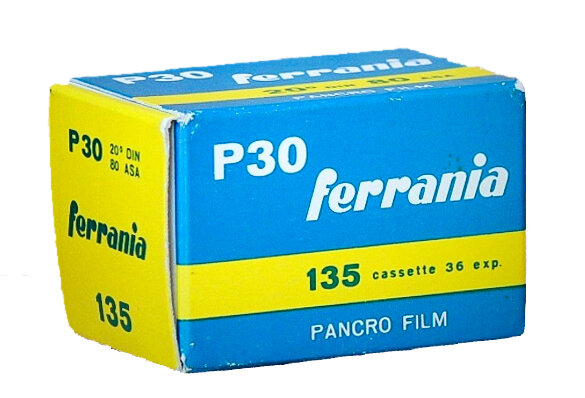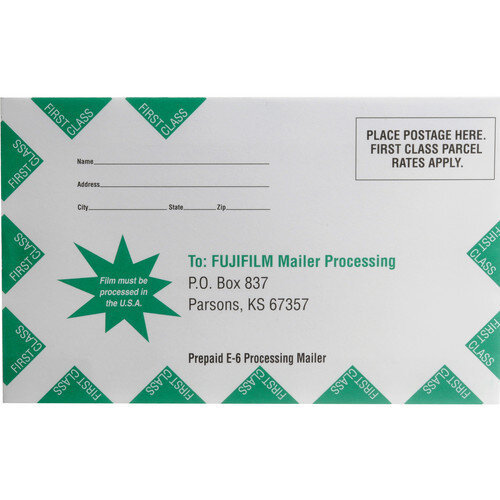Film Shooters of The World Unite! Analog Imaging Is On The Rebound!
Not long ago pundits were predicting that film was doomed, that analog image capture would decline precipitously until silver-halide film manufacturing would no longer be commercially viable. Certainly, the digital revolution, which began in earnest just prior to the millennium, was swift and sudden, and by 2005 digital imaging had virtually eclipsed film. Except for a few holdouts like Leica and view camera companies, film cameras were being discontinued in droves, countless film shooters switched to digital, often selling their high-end film camera outfits for a pittance, and you could buy a Hasselblad 500C/M on eBay complete with lens and film back for a mere 400 bucks. Needless to say, film sales plummeted and many slow-selling film types bit the dust. What a difference a decade makes!
Film photography is now experiencing a genuine renaissance. Film sales, used and new analog camera sales (and prices), as well as processing, scanning, and printing services have all been on the upswing over the last 2 years. Despite these many encouraging signs, it is highly unlikely film will ever again become the dominant image capture medium; however, instead of dying with a whimper, it is likely to continue as a robust niche for the foreseeable future. Indeed, it’s now considered cool to shoot film, not only by geezers afflicted with seller’s remorse after ditching their analog gear but also by thousands of millennials who were born into a digital world and are now seeking new ways to express their creative vision. Film photography is attractive for a host of reasons: it provides a direct connection to a venerable tradition; it produces a physical end product (a negative, a print, a transparency) rather than an image file stored on a hard drive or a memory card, and above all, film images have character, that distinctive look and feel that can be simulated, but not quite duplicated, using digital film emulation apps.
Part of the reason for film’s unique qualities is that images shot on film have actual grain—essentially luminance noise due to slight variations in brightness between adjacent silver-halide crystals or clumps. Many photographers find grain more attractive and natural looking than digital noise, which typically appears as speckles of color or other artifacts, and is due primarily to variations in chroma. Black-and-white films, in particular, can convey a sense of gritty reality with unmatched authenticity, and can capture portraits and street scenes that have that elusive quality of gravitas—“images made for the ages.” While some color films, notably Kodachrome, have disappeared in the wake of the digital revolution, there’s still an impressive array of superb color negative and color transparency films available, each one capable of capturing brilliant colors and superb detail with a unique look and color palette that un-manipulated digital images can’t quite match.
The supply side surge: New films hit the market
The return of Ektachrome, a classic E-6-process film stock for cinematography as well as a popular 35mm slide film, is certainly great news for film fans because it’s a clear indication that the marketing gurus have determined that there’s sufficient demand to justify the huge capital investment required. Announced at the Las Vegas CES show in early January, Kodak stated that over the next several months it will be working to “reformulate and manufacture Kodak Ektachrome film for both motion picture and still photography applications,” with initial availability expected in the fourth quarter of 2017. The choice of many professional cinematographers before it was discontinued in 2012 Ektachrome has a distinctive look and is acclaimed for its extremely fine grain, clean colors, pleasing tonality and good contrast. “We are seeing a broad resurgence of excitement about capturing images on film,” said Steven Overman, Kodak’s chief marketing officer and president of the Consumer and Film Division. “Kodak is committed to continuing to manufacture film as an irreplaceable medium for image creators to capture their artistic vision.”
Kodak will produce Ektachrome at its film factory in Rochester, N.Y., and will market and distribute the Super 8 motion picture film version directly. Kodak Alaris, an independent company since 2013, also plans to offer a still format Kodak Professional Ektachrome for photographers in the 35mm, 36-exposure format. Unlike other Kodak Professional Films, all color negative films, Ektachrome generates a positive image that can be viewed or projected once it’s exposed and processed, making it ideal for high-resolution projection or presentations. It’s also well suited for scanning, and printing onto a range of professional-grade photographic media.
Ferrania unveils new black-and-white film
Ferrania the venerable Italian film manufacturer established in 1923 is resurrecting its well-regarded P30 medium speed black-and-white film. The new P30 will be sold in a limited edition starting now through its Ferrania online store (prices TBA.) According to the company, the ISO 80 film boasts a high silver content (5 grams per square meter) and an ultra-fine grain structure. After becoming the fourth largest film manufacturer in the world, Ferrania shut its doors in 2009, but was revived by co-founders Nicola Baldini and Marco Pagni, who set about right-sizing the original Italian factory to produce film for the modern analog photography market.
Ferrania says that while its “overall footprint and resource demands, as well as production capacity, are a small fraction of existing manufacturers … it is capable of producing, in a sustainable way, professional-quality motion picture and still film products that rival any in the market.” It not only inherited “tons of equipment” from the old company but also has 90 years worth of documentation and know-how, which they claim represents “the entire film manufacturing knowledge of Ferrania.”
Ilford’s black-and-white film blitz
Ilford, the legendary English film manufacturer that recently enarged its distribution and processing facilities in the U.S., offers no less than 9 different black and-white films ranging from ultra-fine-grain ISO 50 Pan F in 35mm and 120 rolls to ultra-high-speed Delta 3200, also in 35mm and 120 roll film. The extensive line includes a C-41 (Kodacolor process) film, XP2 Super, a sharp, fast, fine grain ISO 400 film offered in 35mm and 120 rolls, and SFX, a standard process ISO 200 film with extended red sensitivity to 740nm, Offered in 35mm and 120 roll film sizes, it gives an infrared appearance for creative effects when used with a red filter. Ilford also supplies Ortho Copy Plus, a medium speed fine grain film for copy work and photomicroscopy, popular sheet film sizes.
Lomography LomoChrome Purple XR 100-400 Color Negative Film
Not surprisingly, the lovable lunatics at Lomography, inveterate promoters of a worldwide analog photography movement based on using genuinely crappy box cameras, and semi-crappy Russian 35s among other things, have given us a film that’s perfectly in keeping with their outlier profile. Rendering colors reminiscent of infrared film, Lomochrome Purple XR 100-400 is a unique negative film designed to produce false colors with an overall purple hue. This nominally ISO 400-speed film responds well to overexposure by up to 2 stops (hence the 100-400 designation) which can be used to control the amount of color shifting within the scene. Beyond the surreal color effects this film provides, it is also claimed to deliver high saturation, fine grain, and impressive sharpness. This creative color film intentionally renders false colors, where blue becomes green, green becomes purple, and pink becomes yellow. Red and skin tones remain neutral for a unique effect when photographing people. When overexposing the film, green tones will begin to take on a darker indigo shade rather than a bright purple hue. It may be a little weird, but Lomochrome Purple XR is processed in standard C-41 chemistry. Street price: $8.95 for a 35mm 36-exposure roll.
Prepaid film processing mailers: They’re on the upswing too!
Back in the day I faithfully sent my Kodachrome to Eastman Kodak Co. in Rochester for high-quality processing and slide mounting. Despite my trepidations that the film would be lost or mishandled, over 99% of the time it was returned to me in perfect order. Well, prepaid film mailers are a convenient cost-effective solution for film shooters that never really went extinct, and now they’re regaining their popularity. Here are some examples of what’s out there:
Ilford prepaid 35mm and 120 Film Developing Mailers are a convenient way to get a roll of film developed and scanned. You simply purchase this pre-paid mailer at a street price of $16.00, send one roll of 35mm or 120 black-and-white film to Ilford, and they do the rest. They process the film using all Ilford chemicals and scan the images to a CD in low res. At additional cost you can upgrade to medium and large scans as well, and silver gelatin prints are also available. Return postage is included, but you have to buy the stamps needed to send your film in. Ilford can also develop black and white 35mm and 120 film made by any manufacturer, and each one is processed with a unique development time to obtain optimum contrast and density.
Fujifilm offers mailers for E-6 processing of one roll 35mm or 120 color transparency film at a street price of $10.59. A&I Processing of Hollywood, California offers a wide range of prepaid processing mailers for C-41 color negative films with proof prints and CDs ranging from about $25-35. Alas, Kodak the granddaddy of them all doesn’t currently offer any prepaid processing mailers, but that may change when they re-introduce Ektachrome later this year.
Final factoids on the film resurgence
My good buddy Bill Moretz, the owner of Pro Camera in Charlottesville, Virginia tells me that film processing and scanning services are up by about 25% in his store from last January to this January, a mighty impressive rise. Bill, a camera repairman extraordinaire who specializes in fettling old film cameras to a very high standard, also assures me that the analog camera repair business is booming, “And these folks tell me they’re using these cameras to make pictures, not just to collect dust on the shelf.” Similar sentiments were echoed by my dear friend Roger Christian, president and CEO of University Camera of Iowa City, Iowa, that has always offered on-site film developing, printing, and scanning. “Film processing, which was steady but fairly flat for quite a while is definitely picking up, as are sales of darkroom supplies. I’ve also noticed that more of my young University of Iowa customers are expressing a renewed interest in shooting film.
”Finally, if you want to prove that the popularity of used film cameras is now at an all-time post-digital-revolution high, just take a look at current eBay prices for some classic high-end film cameras.







